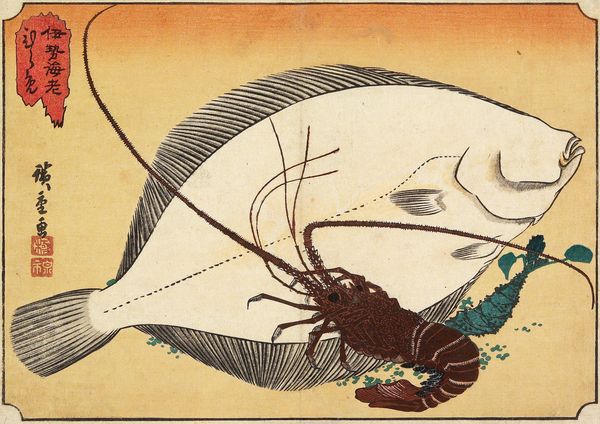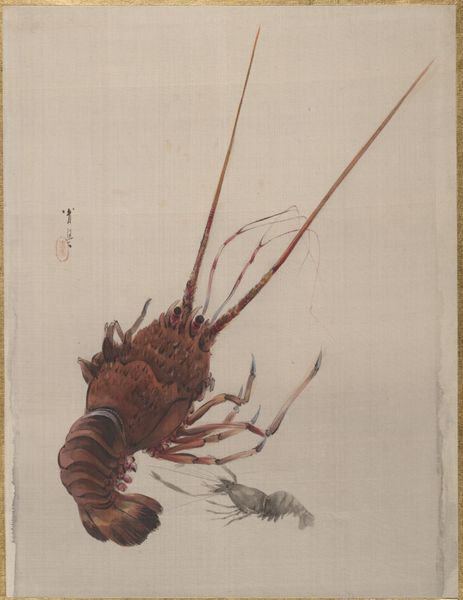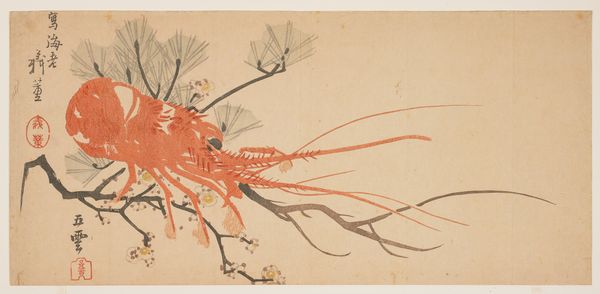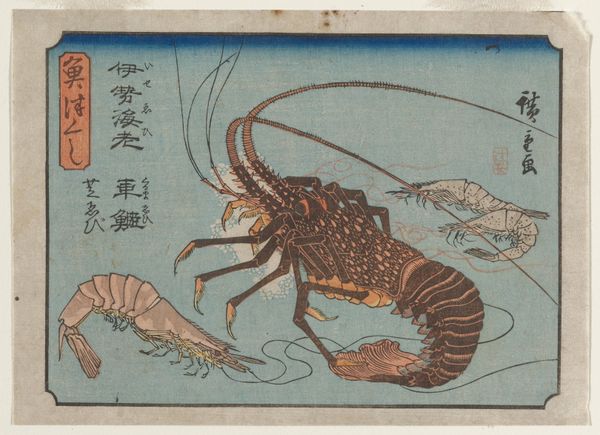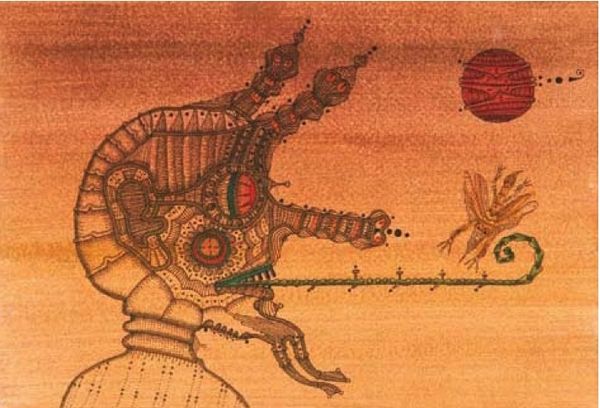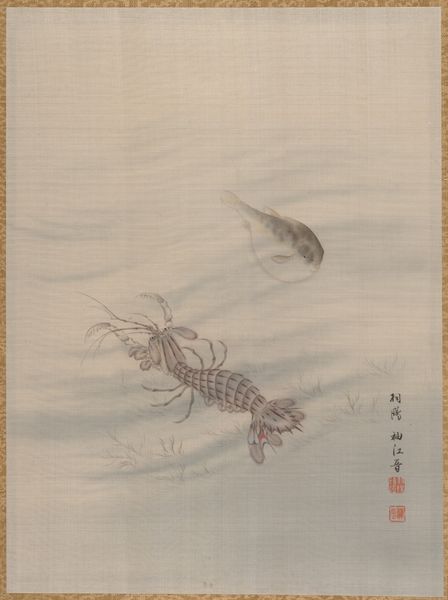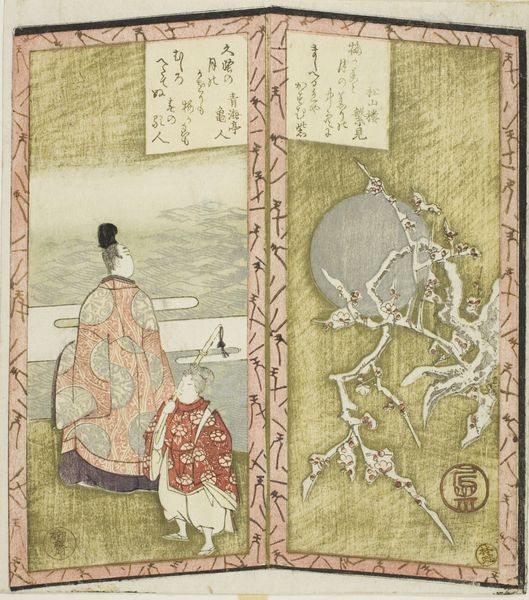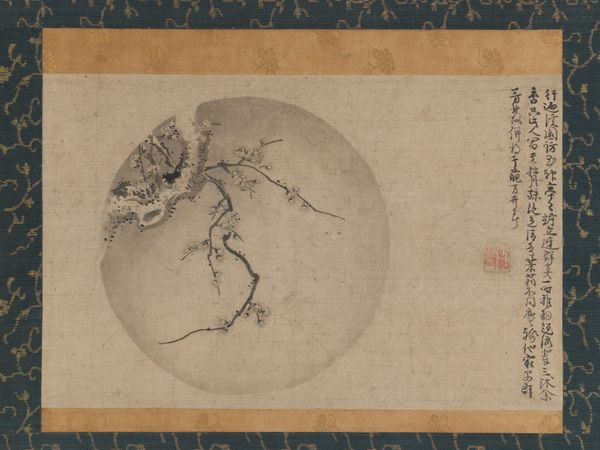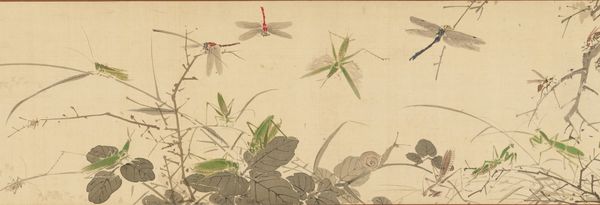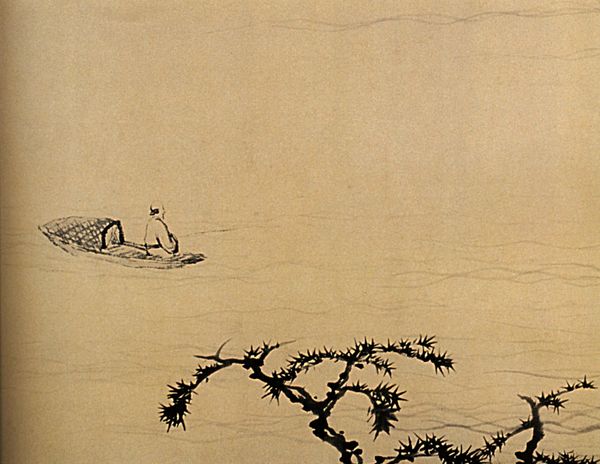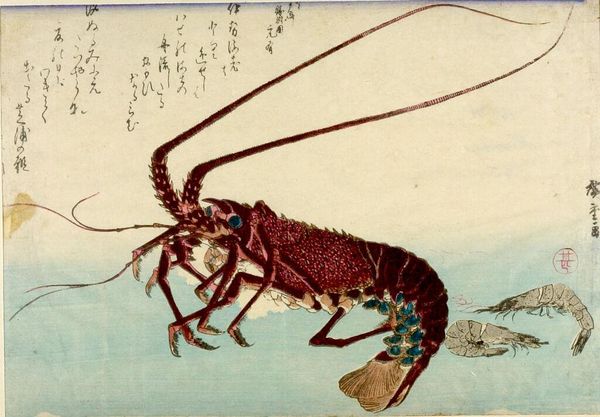
watercolor, hanging-scroll, ink
#
asian-art
#
landscape
#
ukiyo-e
#
japan
#
oil painting
#
watercolor
#
hanging-scroll
#
ink
#
japanese
#
watercolour illustration
#
watercolor
Dimensions: 45 5/16 × 16 5/16 in. (115.09 × 41.43 cm) (image)79 5/16 × 21 3/4 in. (201.45 × 55.25 cm) (mount, without roller)
Copyright: Public Domain
Curator: This hanging scroll, entitled "Fish," was created around the 19th century by Kōno Bairei. He used ink and watercolor to depict an underwater scene. Editor: My immediate reaction is one of tranquility. The muted tones and gentle movement implied in the composition create a soothing effect, even with all the sea creatures occupying a limited space. Curator: Yes, Bairei was quite skilled at evoking mood through his use of color and brushwork. It's also important to consider the materials—ink and watercolor on a hanging scroll. These materials themselves speak to a tradition, to specific processes passed down. This medium allows for fluidity, reflection on Japanese traditions of paintings for screen production, sliding doors, or wall hangings that were part of interior designs of buildings during the time the artist created this art. Editor: Precisely. And we must not forget that depicting aquatic life has often served symbolic purposes, particularly in East Asian art. Fish represent abundance and good fortune. In a broader sense, though, Bairei’s rendering can speak to humans' complex relationship with the natural world—one of reverence, exploitation, and perhaps a struggle to maintain balance. Consider what “abundance” and “fortune” meant in 19th-century Japan for different classes. Curator: A valid point! It’s about more than just an aesthetic portrayal of animals; it is related to questions of labor and commerce in society at that time. Where was the fishing happening? Who consumed the fish? I wonder about the availability of the material: paper for painting production and also about pigment creation that informed availability of painting overall and impacted the material reality of society at large. Editor: Absolutely. And looking closer, what are these species? Is there a deliberate choice to portray some, maybe larger or brighter specimens, while relegating others to a supporting role? Bairei’s image also speaks to tensions of human intervention through food networks versus conservation during Japan's industrial transformation. It encourages to inquire the role that this landscape of creatures could serve as reminder to pre-industrial society or, conversely, advocate new consumption patterns. Curator: Viewing through both lenses truly provides rich texture! It bridges materiality and message into the realm of complex interpretation about a particular point of production for the consumption of the artwork but also questions about wider availability for society members and their cultural backgrounds. Editor: I agree, bringing historical contexts and close examination into consideration can make art that much more engaging for viewers. It bridges the past with urgent realities through critical questioning and reflection.
Comments
No comments
Be the first to comment and join the conversation on the ultimate creative platform.
